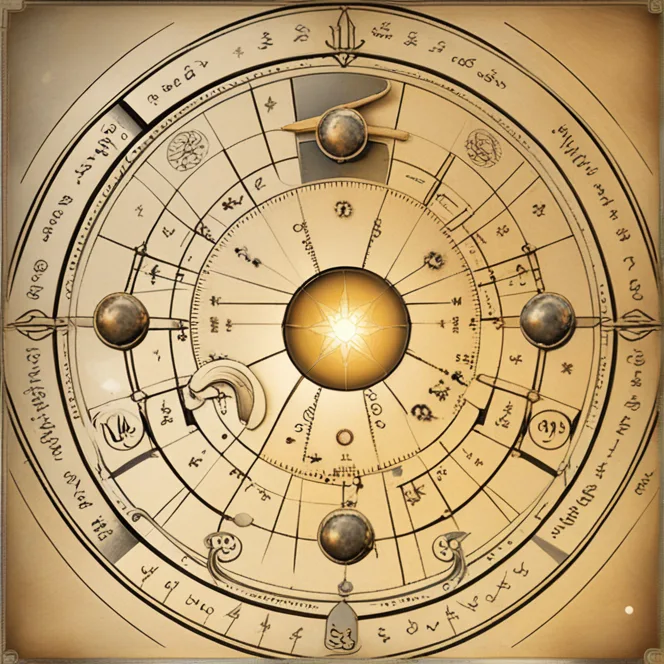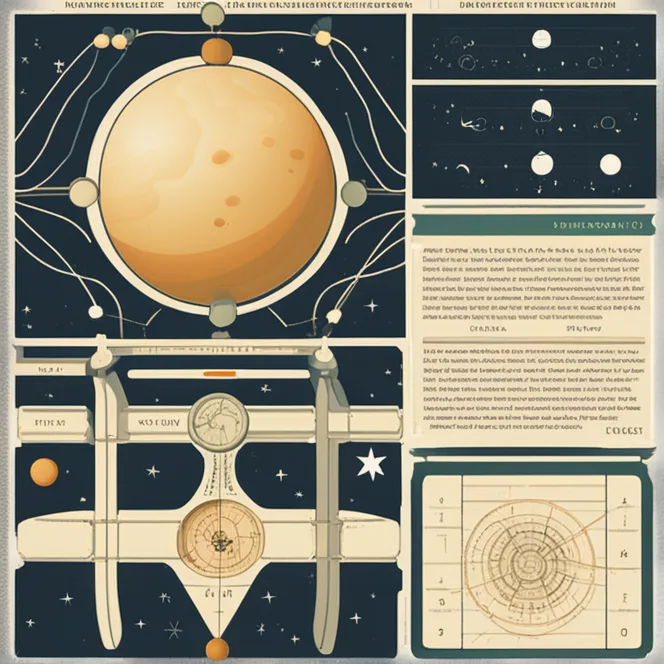
The Secrets Of Your Natal Chart
Learn the essentials of natal chart interpretation in astrology and discover the key elements of your astrological blueprint.
article by Priya Deshmukh
Natal charts, also known as birth charts, are a celestial snapshot of the sky at the precise moment you were born. They serve as a cosmic guide, offering insights into your personality, potential life paths, and unique challenges. Each natal chart is as individual as a fingerprint, encompassing the positions of the planets and other celestial bodies in the twelve houses and zodiac signs. This map forms the foundation for personalized astrological analysis and can reveal layers of understanding about one's self.

Planets & Signs
The planets are the primary characters in your natal chart story, with the sun and moon, known as the luminaries, playing the leading roles. Each planet represents different facets of your life and personality—for instance, Mercury influences communication, while Mars governs drive and aggression. The zodiac signs that the planets occupy describe how these characteristics manifest. For example, Mercury in Gemini suggests a quick-witted and versatile communicator, whereas in Taurus, it may indicate a more deliberate and steadfast way of thinking.

The Significance of Houses
In astrology, the twelve houses of the natal chart depict various life areas, ranging from self-identity to career to spiritual growth. The planets residing within these houses highlight where in life their influences will be most pronounced. The first house begins with the Ascendant, or rising sign, and is associated with self-image and initiation, while the tenth house correlates to professional life and public standing. Understanding the houses' meanings and the planets' placements within them can offer profound insights into personal dynamics and life themes.

Aspects: Planetary Conversations
Aspects are the angular relationships between planets in the natal chart, representing the dialogue between different parts of your psyche. Major aspects include conjunctions, sextiles, squares, trines, and oppositions, each with its own interpretive significance. For instance, a trine denotes ease and flow, while a square suggests tension and challenge. These aspects can modify how the planetary energies operate, either harmonizing or creating friction between them, and thus profoundly influencing an individual's inclinations and experiences.

Integrating the Components
Interpreting a natal chart involves weaving together the narratives of the planets, signs, houses, and aspects. It’s like putting together an elaborate cosmic puzzle where one piece impacts how the others fit together. Careful synthesis of these elements helps to create a nuanced understanding of the individual. Professional astrologers spend years mastering the art of chart interpretation, but even beginners can glean valuable insights by focusing on the most prominent features of their charts, such as the positions of the sun, moon, and Ascendant.
Personal Growth Through Natal Chart Analysis
Besides offering insight into personality traits and tendencies, a natal chart can act as a tool for personal development and self-awareness. It can reveal innate strengths to cultivate and challenges to overcome. Natal charts do not dictate fate; rather, they highlight potential areas for growth and transformation, empowering individuals to make conscious choices about their life paths. Engaging with astrology in this way can be both enlightening and enriching, as it invites a deeper exploration of the self and one’s place in the universe.
Published: 12/5/2023
Modified: 12/5/2023
More predictions
Come back here soon to learn more about yourself and your future


The Ascendant's Role
Have you ever been told you don't act like your Sun sign? Perhaps you're a calm and collected Aquarius, yet people first perceive you as intense and passionate. This initial perception, the mask you wear, is majorly influenced by the Ascendant in your horoscope, often called the Rising Sign.


Exploring the Mysteries of Birth Charts in Astrology
Unravel the secrets of birth charts in astrology and discover how celestial bodies shape your personality and destiny.


The Celestial Blueprint: Understanding Birth Charts
Explore the cosmic significance of birth charts and their role in shaping your astrological journey.